Budget (and city) deep sky astro photography
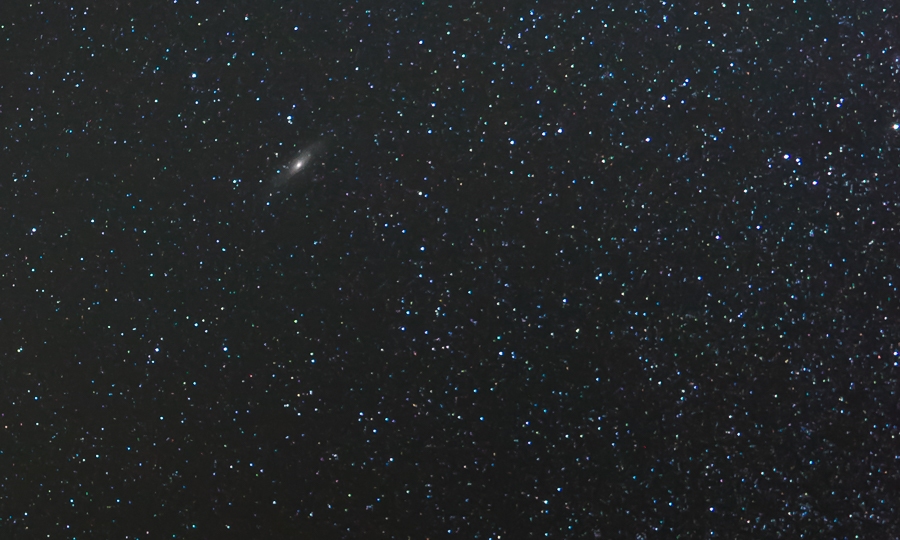
Andromeda. Not from the city, but without a telescope.
In order to photograph deep sky objects, we also need expensive equipment (telescopes with a large mirror, mount with an engine, etc.) and going out of the city - where there is no glare.
And what about those who have no money for expensive equipment, no space for storing 10 inch reflectors and no time to travel regularly to the desert?
I’m trying to figure out what to do in this case when I really want to shoot Deep Sky (i.e., nebulae, star clusters of galaxies).
Firstly, long exposures are needed, for this I took Skytracker an equatorial mount for a camera (the next generation of this mount was already on sale
Skytracker is put on a tripod, and already on it a tripod head is put on.
Orient him to the polar star, turn on the engine and he turns the camera on the tripod head as the Earth rotates.


In the pipe skytreker need to find a polar star. It should not be in the center of the circle (because the Polar Star is still not exactly at the point around which the stars are spinning). There is a special application for Android, which shows how to put it.
Secondly interferes with urban illumination. To fight it, I bought a filter ( Hoya 67mm Intensifier Red Enhancer Filter
Let's see how it works together.
All shot on Sony A7II, Sony-Zeiss 24-70 / 4.0
First shot without filter, ISO 640, F4.0, 30 sec, 26mm

Now the same parameters of the snapshot, but with a filter. ISO 640, F4.0, 30 sec, 26mm
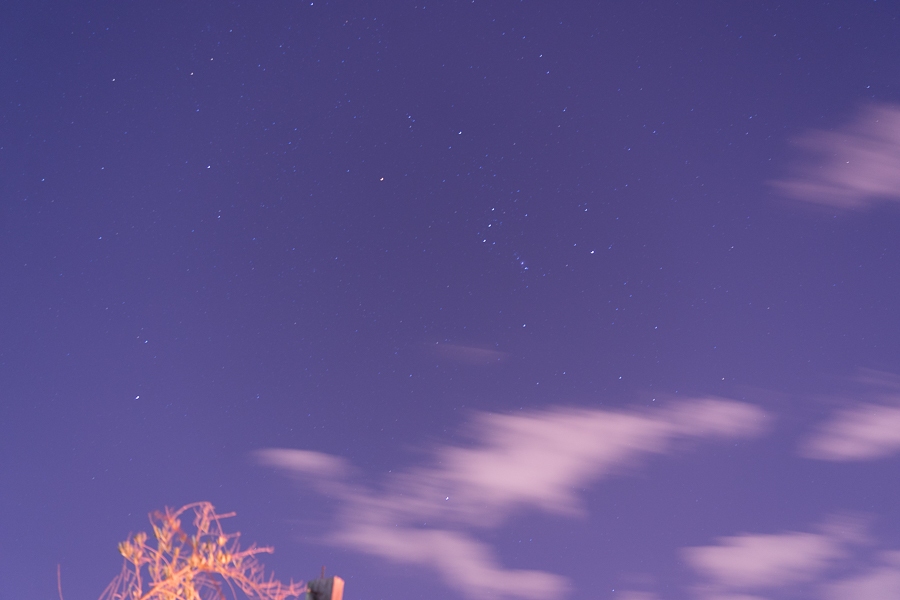
For 30 seconds and a focal length of 26 mm per full frame, you can still manage without the equatorial mount with a motor, but if you make more shutter speeds and increase the focal length, the stars will turn into dashes - the Earth rotates! So I wear the Sky tracker on a tripod, a tripod head on the Sky tracker.
But without the filter ISO 640, F4.0, 67 sec, 60 mm
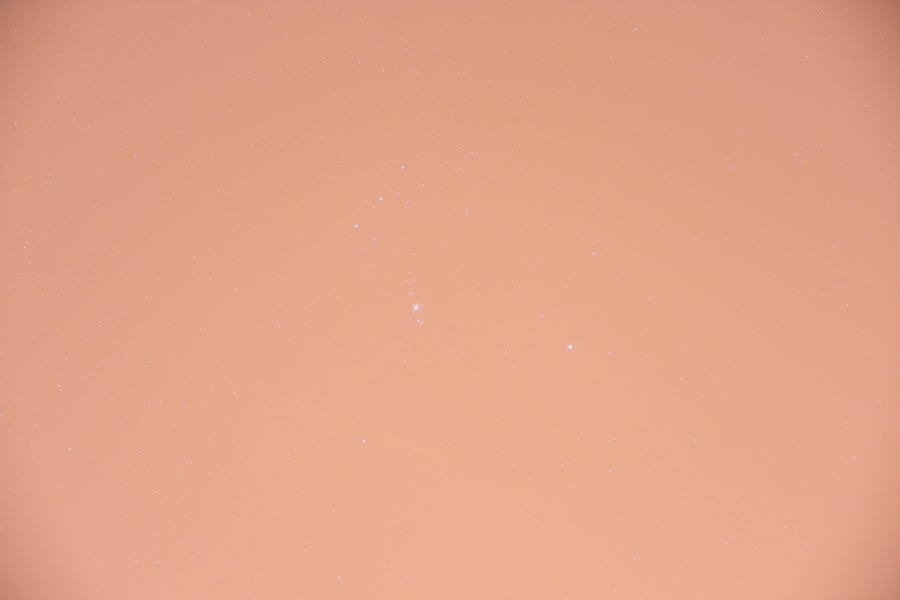
A here with the filter ISO 640, F4.0, 106 sec, 60 mm
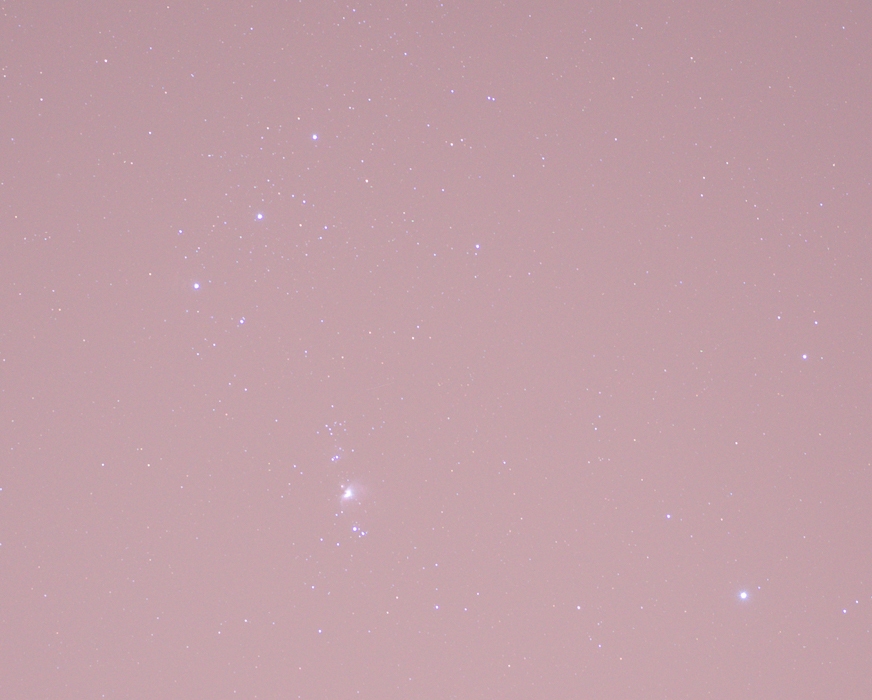
If we carry out some processing over the last snapshot, then this is the Orion Nebula:

For a picture of the city (I live in Rehovot, Israel, near Tel Aviv and the metropolis in general) and without a telescope, it seems good.
If you leave the country thoroughly, then with the same technology Sony A7II, Sony-Zeiss 24-70 / 4.0 and Sky Tracker, you can get this:
Andromeda:
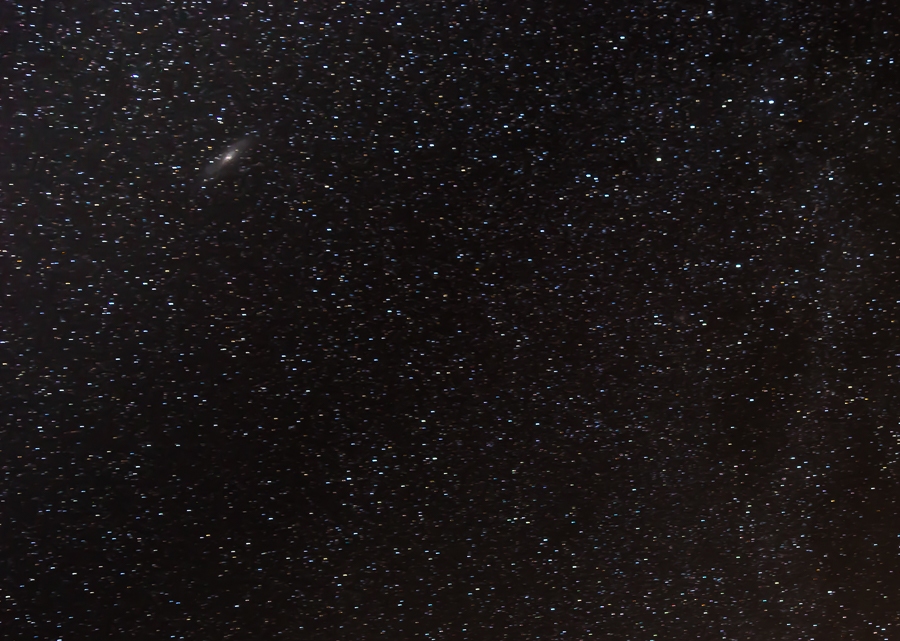
Orion and Pleiades 105 s, 24mm

And here they are, increased to 100% from another snapshot (89 seconds):
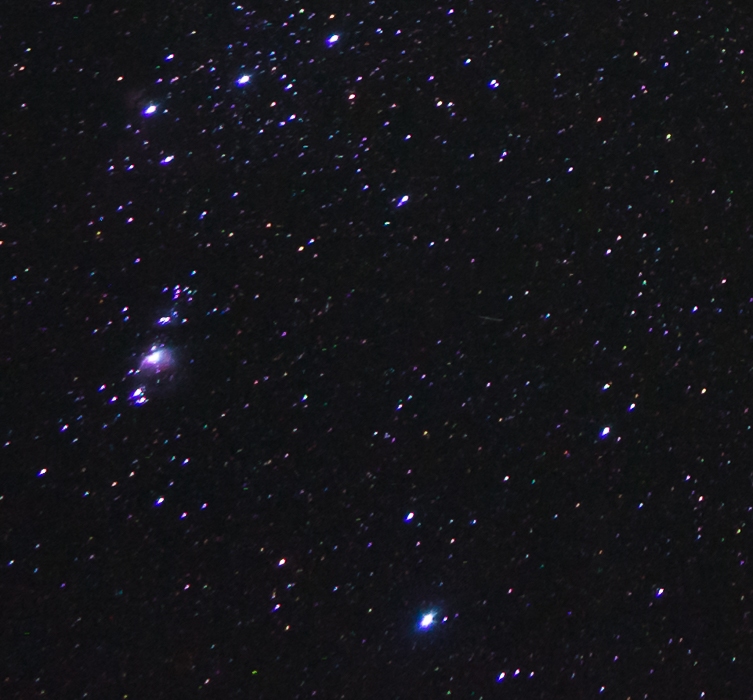

Triangle galaxy (M33) 128s, 70mm (full frame) with a meteor - she accidentally got into the frame and I was looking for a long time on the star maps, what I took
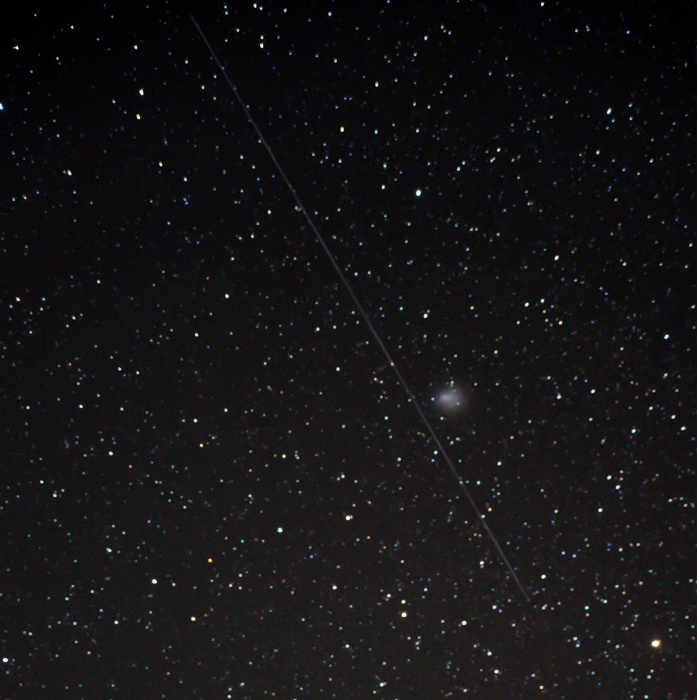
All Articles